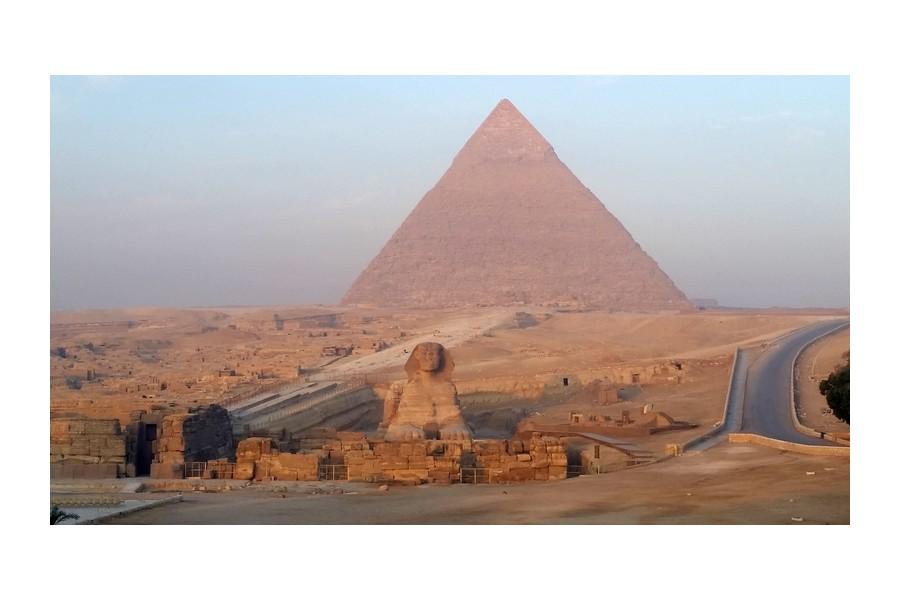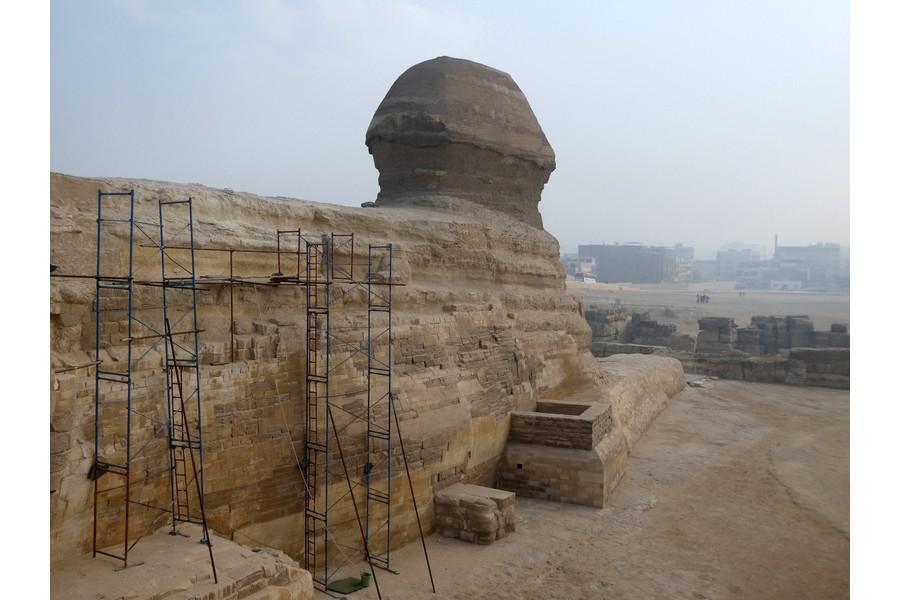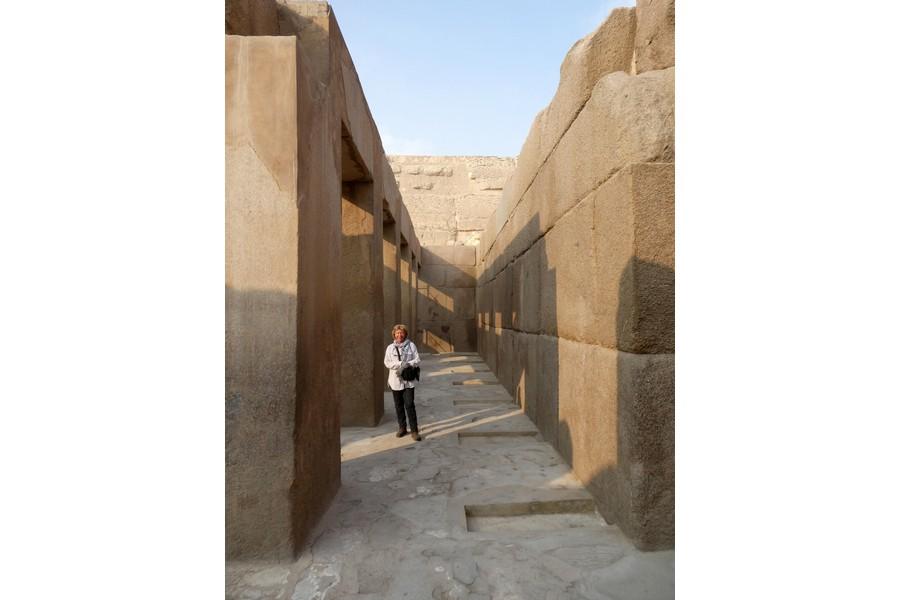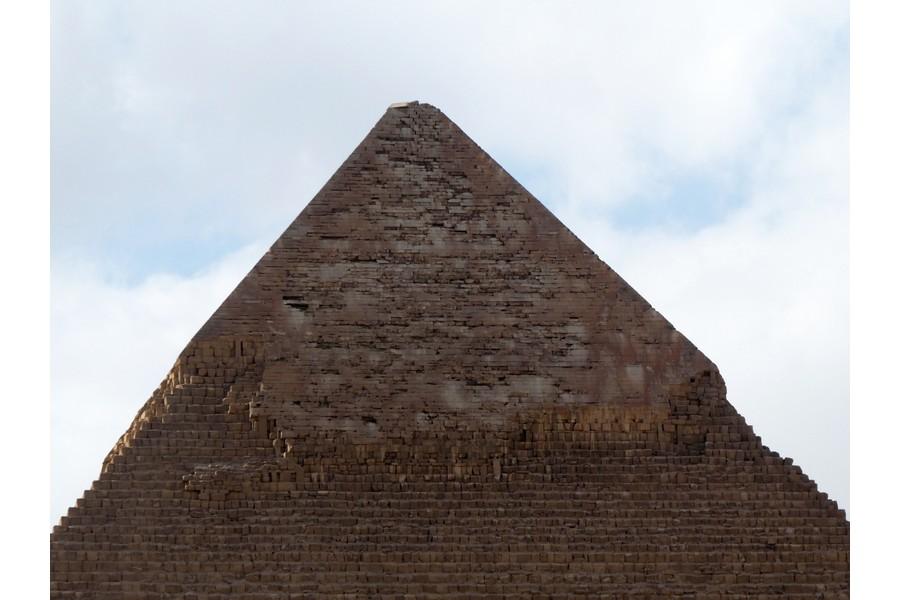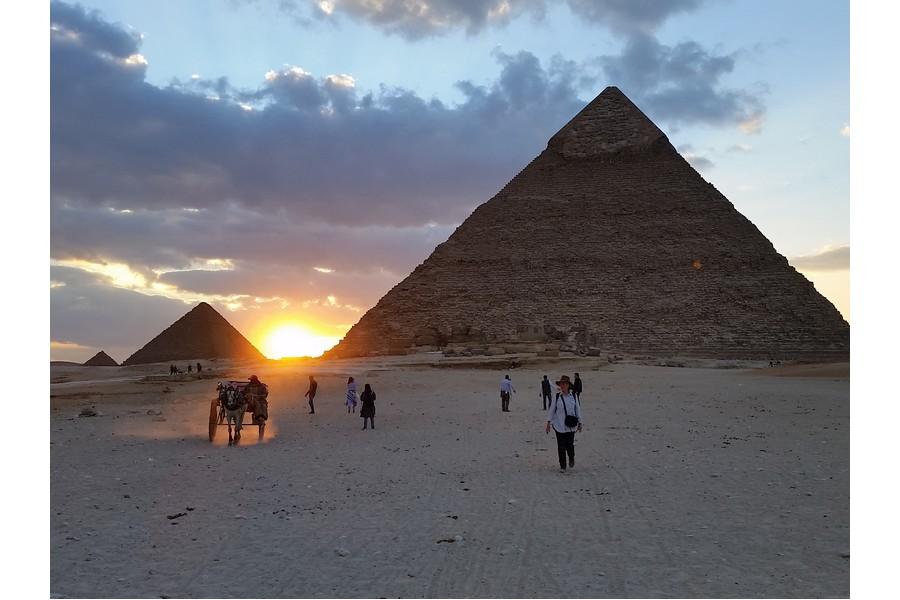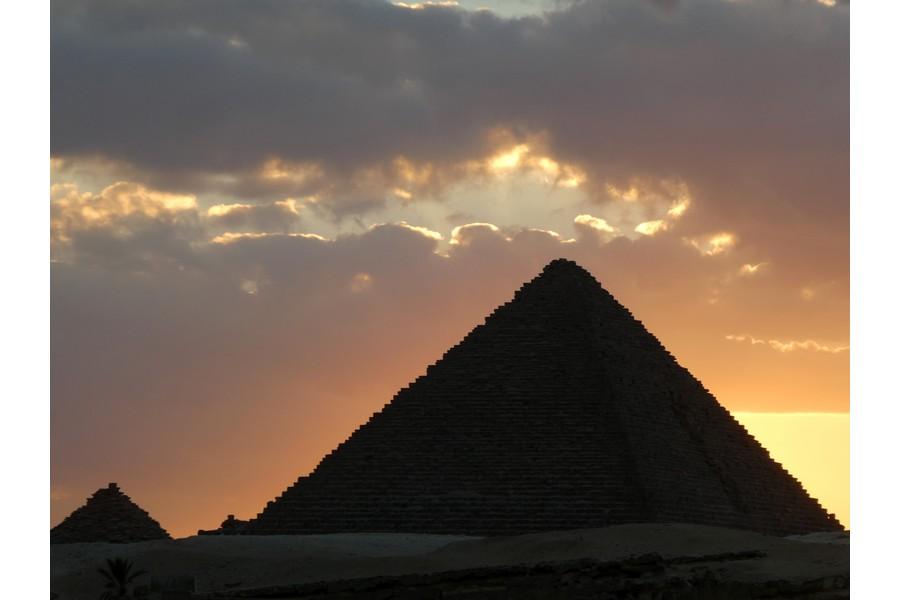The Dawn of 2019
Country
Before sunrise on the 1st, we layered ourselves with just about every piece of clothing we possessed then watched the sun slowly creep to expose remnants of life over 4000 years ago. The air was a little hazy which served to turn sunrise colours from dusty pastel purple to pink, then pale apricot. We were at the Great Pyramids of Giza! Some days you just have to pinch yourself…
As soon as we could, and armed with water, food, hats, boots and cameras, we entered the complex. We just knew we could spend the whole day wandering, taking photos and just trying to fully absorb exactly where we were. We had seen artist’s impressions of what this area could have been like looked forward to entering such a world.
We first had to run the gauntlet of the souvenir row, before coming face to face with the Great Sphinx of Giza. Cut from exposed hard rock, it measures 73m long from paw to tail, 20m high from the base to the top of the head and 19m wide at its rear haunches.
We ambled around the Great Pyramid of Khufu, the smaller Pyramid of Khafre, the relatively modest-sized Pyramid of Menkaure, then across to a number of smaller structures known as the "Queen's pyramids".
An absolute highlight was touring Khufu’s Solar Boat Museum. Words can’t express the feelings of disbelief and wonderment when walking around an intact full-size vessel from Ancient Egypt that was sealed into a pit in the Giza pyramid complex around 2500 BC. Like other buried Ancient Egyptian ships, it was apparently part of the extensive grave goods intended for use in the afterlife. Khufu's ship is one of the oldest, largest, and best-preserved vessels from antiquity. It measures 43.6m long and 5.9m wide, and was reconstructed from 1,224 pieces which had been laid in a logical, disassembled order in the pit beside the pyramid.
Since the 2011 Arab Spring revolution, the tourism industry, so central to Egypt’s economy, has been devastated by years of political turmoil and a series of disasters including the suspected bombing of a Russian plane over the Red Sea resort town of Sharm el-Sheikh in 2015. Touts are quite ferocious everywhere in Egypt and we needed to remind ourselves that they have had it tough for such a long time and were really just trying to make a living. You do end up feeling a bit like a walking ATM, however best practice is to remain calm and pleasant…sometimes easier said than done…
The end of the peaceful Old Kingdom sees a period of political turmoil, poverty and famine before the Pharaoh Mentuhotep II eventually gets things back on track.
First Intermediate Period (2150-1975 BC) Dynasties IX-XI
Egypt splits back into two countries. The Old Kingdom ends and the first Intermediate period begins.
Middle Kingdom (1975-1640 BC) Dynasties XI-XIV
The Pharaoh Mentuhotep II reunites the two parts of Egypt under one rule signalling the start of the Middle Kingdom. The royal tombs are moved to the north near the city of Memphis. The Egyptians start to use irrigation to carry water from the Nile to their crops.
Speaking of the mighty Nile River, our next adventure was to travel south to Luxor and Aswan and UP (yes, up) the Nile. “As the world’s longest river, the Nile cuts through 11 countries and an incredible 6680km of Africa as it winds its way north towards the Mediterranean Sea. It has two main sources: Lake Victoria in Uganda, out of which flows the White Nile; and Lake Tana in the Ethiopian highlands, from which the Blue Nile emerges. The two rivers meet at Khartoum in Sudan”.
Security is extremely high throughout Egypt and to travel by train, visitors are almost forced to travel on the overnight sleeper trains out of Cairo so authorities can monitor movement. We did our research and found that you could set up on online account and buy tickets for the day time local trains for a fraction of the price. This we did and thoroughly enjoyed a very comfortable, serviced 10 hour daytime train ride from Cairo to Luxor enjoying all the sights of life along the Nile. There was a trolley man selling food and beverages, and even full meals. In reality, we actually felt safer amongst the locals than grouped together with other tourists.
Contrary to our original thoughts, travel through Africa isn’t cheap. If you want to see the big ticket items in Egypt, then it soon adds up to something quite expensive. Advertised are Cairo and Luxor Passes that we would have purchased, however the system hadn’t been fully implemented and tested and were therefore not available. With recent increased numbers of visitors, prices had substantially risen this particular high season - just when we decide to visit! We soldiered on as to see the big ticket items was precisely why we were in Egypt.
Luxor here we come!


